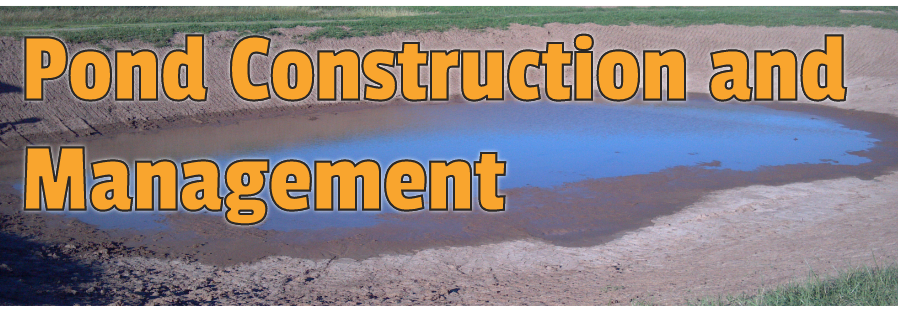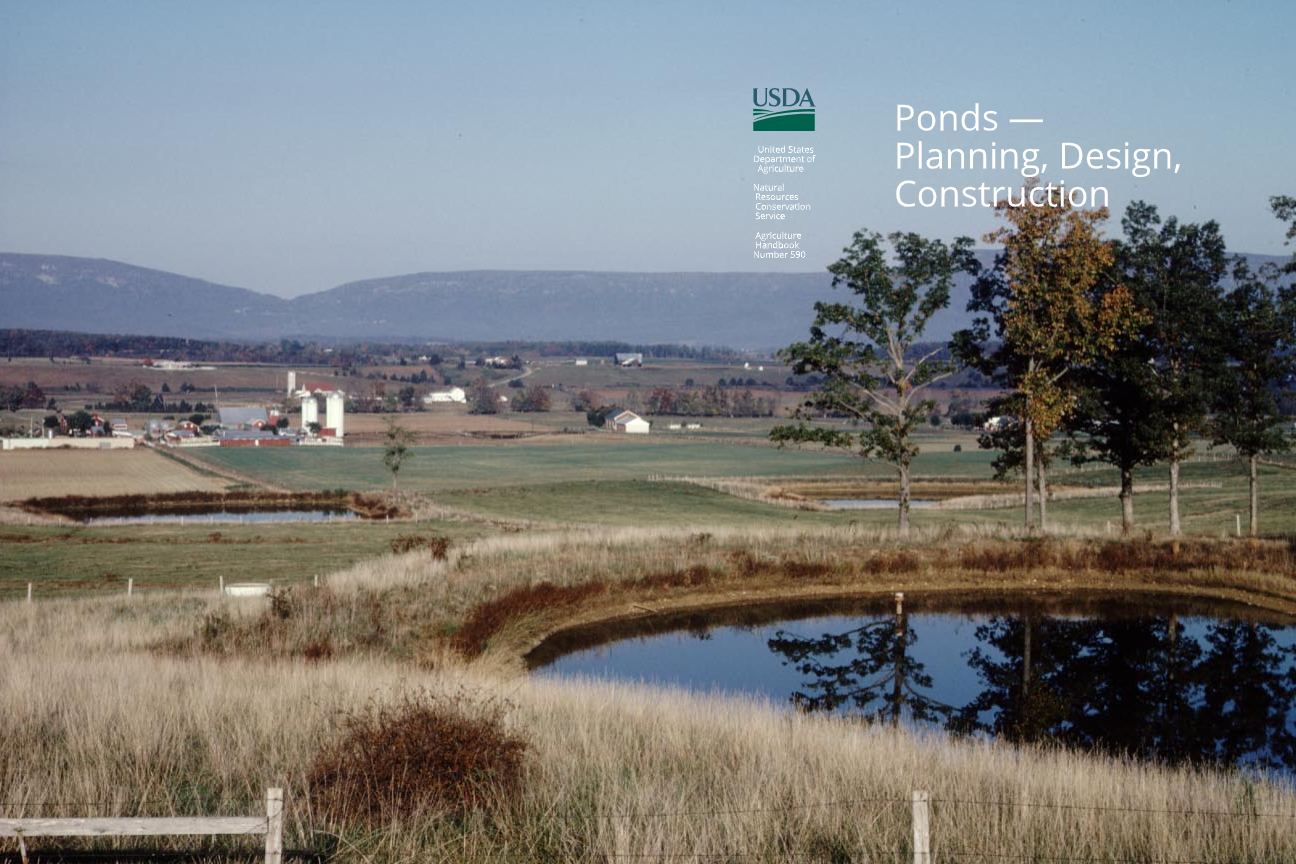Main Content

Construction

The Natural Resources Conservation Service (NRCS) publication 590 – Ponds: Planning, Design, Construction is a comprehensive guide to pond construction. With this publication and your own equipment, you can confidently build your own successful pond. Click the image to the left or link at the bottom of this page to download a free copy of the manual. You can also hire experienced engineers to do the work for you. Check with your local
county Extension or
NRCS office for guidance on local contractors.
While the technical details are spelled out in the NRCS 590, some general rules-of-thumb are worth mentioning. There is a misconception with some that deeper is better when it comes to pond depth. If your only concern is water storage, this may be true. However, if raising fish is your main goal, deeper water can be actually be a liability. Most Arkansas ponds become thermally stratified during the summer. This prevents cooler, and more dense, water near the bottom of the pond from mixing with warmer, less dense, water near the surface of the pond. Over time, organic matter from fish waste, leaves, limbs, and dead aquatic vegetation accumulate on the pond bottom where they decompose. Decomposition uses oxygen and many Arkansas ponds can become anoxic (lacking oxygen) near the bottom. As the summer progresses, this anoxic zone can get larger and render much of the deep water useless for fish growth. Even worse, in the fall when water temperatures decline and the surface and bottom layers of water mix (often referred to as the turnover), dissolved oxygen that was concentrated near the surface of the pond is now diluted to the entire pond volume and organic material that was once locked near the bottom is released throughout the water column. During this period, the pond can take on a murky appearance and produce a foul odor. This is also a time when fish kills from dangerously low dissolved oxygen and even harmful chemical release from bottom sediments can occur. Turnovers typically clear up in one to two weeks. Deeper water, especially in productive ponds, can increase the severity of turnovers and put fish at risk. For this reason, it is often recommended that Arkansas ponds are built no more than about 12 feet deep. There are exceptions to every rule, and the roles your pond needs to fulfil may make this recommendation unnecessary.
Another rule-of-thumb is to design shape shoreline slopes to approximately 3:1 (one foot deep for every three feet from shore). This angle is fairly resistant to erosion, it is reasonably safe for children and livestock walking the bank, and it helps prevent excessive vegetation growth by minimizing water shallower than about 3 feet.
Keep the dam covered in grass, but mow it frequently enough to suppress woody vegetation growth. Roots from shrubs and especially trees can compromise the clay layers in dams and can lead to leaks. If your dam already has trees thicker than about 6 inches in diameter, it is best to leave them alone.
Have your soil tested by the Extension service during the construction process to see if chemical adjustments are needed. Many ponds in Arkansas are slightly acidic and less productive than they could be as a result of the soil chemistry on which they were built. Agricultural lime is a commonly recommended treatment that is immensely easier to apply properly before the pond fills with water. Check links below for pages and publications with more details on water chemistry treatments.
What to read next:
-
Water Chemistry
-
Fish Habitat
Additional resources:
-
NRCS590 – Ponds: Planning, Design, Construction
-
ANRC dam safety, guidelines, forms, and assistance